July 9th Scots Book of Days
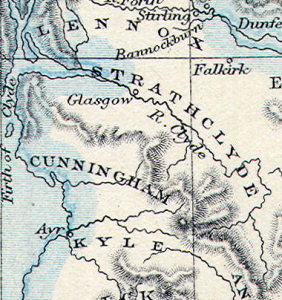 July 9 532 circa Arthur established himself in Strathclyde fixing upon Alclywd as one of his fortresses. Legends began to be recorded over three centuries later. This place, some said, was then called Castrum Arthuri; while Stirling Castle is affirmed to be his ’round table’. Here Arthur reigned from 508 till his death in 542.” Caw and Hueil are said to have been father and son, and seem to have been minor kings opposed to Arthur, the Ard Righ (High King). Arthur is said to have killed both Caw and his sons in battle. The sons died first, not in Wales, but at Cambuslang, a site associated with Nennius’ (9th century) sixth battle of his list of Arthur’s twelve victories.
July 9 532 circa Arthur established himself in Strathclyde fixing upon Alclywd as one of his fortresses. Legends began to be recorded over three centuries later. This place, some said, was then called Castrum Arthuri; while Stirling Castle is affirmed to be his ’round table’. Here Arthur reigned from 508 till his death in 542.” Caw and Hueil are said to have been father and son, and seem to have been minor kings opposed to Arthur, the Ard Righ (High King). Arthur is said to have killed both Caw and his sons in battle. The sons died first, not in Wales, but at Cambuslang, a site associated with Nennius’ (9th century) sixth battle of his list of Arthur’s twelve victories.
http://www.templum.freeserve.co.uk/history/strathclyde/arthur.htm
Strathclyde topographical map showing the River Clyde, Glasgow, Firth of Clyde, Ayr, Kyle, Falkirk, Kyle, Carrick, Annandale. Stirling is in Lennox. The valley and castle of Arthur. Bannockburn. Cunningham.
1297 Sir William Douglas, known as “le Hardi” or “the bold”, who had been the first noble supporter of William Wallace (the elder Douglas died circa 1298, a prisoner in the Tower of London). The third time Douglas was held a prisoner of Edward Plantagenet, (ancestor of James 2nd Stewart, King of Scots) was after 9 July 1297 when Douglas was accused by Sir Henry de Percy of breaking Douglas’ covenant of peace with Edward that was agreed to in the document known as the Capitulation at Irvine Water, where Douglas was in the company of Robert Brus, Alexander de Lindsay and John Stewart of Bonkyll and James 5th High Stewart (the latter three Douglas’ brothers in law). By the time Sir Andrew de Moray and William Wallace won their great victory at Stirling, Sir William ‘le Hardi’ was again Edward’s prisoner at Berwick Castle; staying in what was now called ‘Douglas Tower’.
- Douglas 1036 2Stewart 2Ruthven 2Kinchin 2Jared 2Simmons 2Choate – Douglas 2Montgomberie 2Blair 2Cochrane 2Miller 2Simmons 2Choate – Douglas 2Hamilton 2Stewart 2Miller 2Simmons 2Choate – Douglas 2Carlyle 2Semple 2Montgomery 2Cochrane 2Miller 2Simmons 2Choate
 Coat of arms of the Royal Burgh of Irvine. Irvine is on the Firth of Clyde in North Ayrshire, Scotland. Irvine was the site of Scotland’s 12th century Military Capital and former headquarters of the Lord High Constable of Scotland, Hugh de Morville. It also served as the Capital of Cunninghame and was, at the time of David I, Robert II and Robert III one of the earliest capitals of Scotland. In the 20th century, Irvine is a town and ranch in Orange County California.
Coat of arms of the Royal Burgh of Irvine. Irvine is on the Firth of Clyde in North Ayrshire, Scotland. Irvine was the site of Scotland’s 12th century Military Capital and former headquarters of the Lord High Constable of Scotland, Hugh de Morville. It also served as the Capital of Cunninghame and was, at the time of David I, Robert II and Robert III one of the earliest capitals of Scotland. In the 20th century, Irvine is a town and ranch in Orange County California.
1297 James Stewart, 5th High Steward of Scotland, one of the six Guardians of 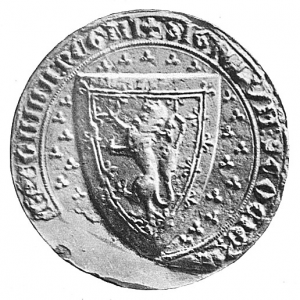 Scotland. James subsequently submitted to King Edward I of England on 9 July 1297, and was one of the auditors for the competitor, Robert Bruce, 5th Lord of Annandale.
Scotland. James subsequently submitted to King Edward I of England on 9 July 1297, and was one of the auditors for the competitor, Robert Bruce, 5th Lord of Annandale.
- Brus or Bruce 1050 2Stewart2Kennedy 2Montgomery2Blair 2Cochrane2Miller 2Simmons2Choate zoe ToaG
Great Seal The Guardians of Scotland were the de facto heads of state of Scotland during the First Interregnum of 1290–1292, and the Second Interregnum of 1296–1306.
1439 – Sir Thomas Boyd of Kilmarnock (died 9 July 1439). Robert married Mariot (or Janet), daughter of Sir Robert Maxwell of Calderwood. She died after 25 June 1472, apparently early in 1473. In 1852 the Kilmarnock Conference of the Church of Jesus Christ was raised up, but in 1857 the last-named conference was attached to the Glasgow Conference;
Dean Castle is situated in the Dean Castle Country Park in Kilmarnock, East Ayrshire, Scotland. It was the stronghold for the Boyd Family, who were lords of Kilmarnock for over 400 years.
1466 – John Somerville, 3rd Lord Somerville (previously married Helen Hepburn.) 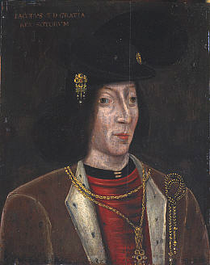 with the Boyds, Adam Hepburn, Master of Hailes, and Andrew Ker of Cessford, abducted James III King of Scotland (age 15) who was hunting near Linlithgow Palace to Edinburgh. The Boyds then attempted to gain control of the Scottish government for two years. Wikipedia. James III Stewart (10 July 1451 – 11 June 1488) was King of Scots from 1460 (age 9) to 1488.
with the Boyds, Adam Hepburn, Master of Hailes, and Andrew Ker of Cessford, abducted James III King of Scotland (age 15) who was hunting near Linlithgow Palace to Edinburgh. The Boyds then attempted to gain control of the Scottish government for two years. Wikipedia. James III Stewart (10 July 1451 – 11 June 1488) was King of Scots from 1460 (age 9) to 1488.
1540 Anne of Cleves 4th wife of Henry VIII of England annulled. Anne was born in 1515 in Düsseldorf, the second daughter of John III of the House of La Marck,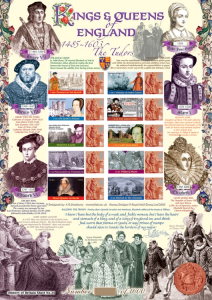 Duke of Jülich jure uxoris, Cleves, Berg jure uxoris, Count of Mark and Ravensberg jure uxoris (often referred to as Duke of Cleves) who died in 1538, and his wife Maria, Duchess of Julich-Berg (1491–1543). She grew up living in Schloss Burg on the edge of Solingen. Anne’s father was influenced by Erasmus and followed a moderate path within the Reformation. He sided with the Schmalkaldic League and opposed Emperor Charles V. After John’s death, Anne’s brother William became Duke of Jülich-Cleves-Berg, bearing the promising epithet “The Rich.” In 1526, her elder sister Sybille was married to John Frederick, Elector of Saxony, head of the Protestant Confederation of Germany and considered the “Champion of the Reformation.” 9 July 1540 – 16 July 1557: Her Highness Duchess Anne of Cleves, the King’s Beloved Sister. Henry’s sister Margaret Stewart (dowager Queen of Scots, nee Tudor, nee Douglas), wife of Henry Lord Methven Stewart, and mother of James 5th. Wikipedia
Duke of Jülich jure uxoris, Cleves, Berg jure uxoris, Count of Mark and Ravensberg jure uxoris (often referred to as Duke of Cleves) who died in 1538, and his wife Maria, Duchess of Julich-Berg (1491–1543). She grew up living in Schloss Burg on the edge of Solingen. Anne’s father was influenced by Erasmus and followed a moderate path within the Reformation. He sided with the Schmalkaldic League and opposed Emperor Charles V. After John’s death, Anne’s brother William became Duke of Jülich-Cleves-Berg, bearing the promising epithet “The Rich.” In 1526, her elder sister Sybille was married to John Frederick, Elector of Saxony, head of the Protestant Confederation of Germany and considered the “Champion of the Reformation.” 9 July 1540 – 16 July 1557: Her Highness Duchess Anne of Cleves, the King’s Beloved Sister. Henry’s sister Margaret Stewart (dowager Queen of Scots, nee Tudor, nee Douglas), wife of Henry Lord Methven Stewart, and mother of James 5th. Wikipedia
www.bfdc.co.uk/2009/smilersheets/the_house_of_tudor.html
1548 Sieges of Haddington (1548–1550). Began. The Master of the Scottish Artillery, Lord Methven, (widower of Margaret nee Tudor) organised guns to be brought from the siege of Broughty Castle in June 1548. Mary of Guise came to view the progress of the siege on 9 July 1548 and her party came in range of the English guns. Sixteen of her entourage were killed around her and she was terror-stricken. At this time the English inside were countermining against the French and Scottish siegeworks. Wikipedia.
1565 Mary Queen of Scots married Henry Stuart, Lord Darnley at Holyrood Palace, Edinburgh 9 July 1565 one child James VI.
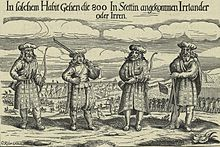 1631 William Keith, 6th Earl Marischal confirmation as commander of the king’s [Charles 1st] navy in Scotland on 9 July 1631. He received King Charles Stewart (later 1st) on his entry into Edinburgh in 1633 after his coronation and then in 1634 fitted out another fleet, which he sent to
1631 William Keith, 6th Earl Marischal confirmation as commander of the king’s [Charles 1st] navy in Scotland on 9 July 1631. He received King Charles Stewart (later 1st) on his entry into Edinburgh in 1633 after his coronation and then in 1634 fitted out another fleet, which he sent to 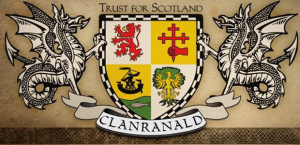 the assistance of Władysław IV Vasa.
the assistance of Władysław IV Vasa.
- Keith of Dunnottarin Kincardine 1109 2Stewart2Campbell 2Montgomery2Blair 2Cochrane2Miller 2Simmons2Choate zoe Blair5
The earliest image of Scottish soldiers wearing tartan, from a woodcut c. 1631
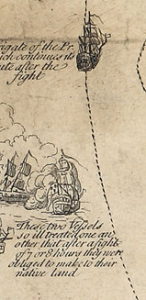 1745 English Channel. Naval Battle between Elizabeth man of war and Lion, English ship of war. Elizabeth’s 2 captains lost, returned to Brest to refit. Charles Edward Stewart on armed brig Doutelle, heads for Island of South Uist, isles belonging to MacDonald of Clanranald and his kinsfolk. (TG75-70)
1745 English Channel. Naval Battle between Elizabeth man of war and Lion, English ship of war. Elizabeth’s 2 captains lost, returned to Brest to refit. Charles Edward Stewart on armed brig Doutelle, heads for Island of South Uist, isles belonging to MacDonald of Clanranald and his kinsfolk. (TG75-70)
Athair Entertainment is fortunate to have Charlie Allan, CEO of both Clanranald Trust for Scotland, (including the medieval fort/village at Duncarron and the Scottish “medieval rock” band Saor Patrol) and Combat International, agree to be part of our multi-episode, multi-season television project, having already provided their combat teams for such feature films as Gladiator, King Arthur, Robin Hood, Snow White and the Huntsman, Thor II, The Eagle.
1745 July 9 PRINCE CHARLES EDWARD STUART Met the Lion, British man-of-war, off the Lizard, which the Elizabeth engaged, and was so damaged that she returned to Brest; the Doutelle proceeded (I. 203, 286).
1755 Battle of Monongahela River 1755 America – Braddock’s Defeat, Fort Duquesne, western Pennsylvania Colony. The French and Indian War also known as the Seven Year War (1757 to 1762). 4 companies of the 44th under Sir Peter Halkett had been overwhelmed by the rebels in the Jacobite victory at Prestonpans in 1745. The 48th had been highly successful in the ’45, being one of the few regiments to stand their ground at Falkirk. There was friction between the two regiments.
Almost certainly a legacy of the ’45, Braddock and Orme treated the three Scots senior 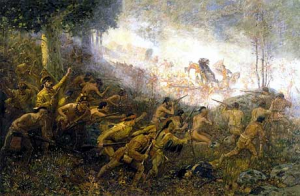 officers, Halkett, Dunbar and Saint Clair with contempt. Several of the Virginian officers may have been fugitives from the ’45: Polson, Craik, Stevens and Hogg. Polson was accused by British officers of being a Jacobite and demanded to be tried by court martial.
officers, Halkett, Dunbar and Saint Clair with contempt. Several of the Virginian officers may have been fugitives from the ’45: Polson, Craik, Stevens and Hogg. Polson was accused by British officers of being a Jacobite and demanded to be tried by court martial.
French & Indians attack the British & Colonial (American) troops; Braddock shot while George Washington attempts to assist Braddock. Braddock buried in the road bed cut through the forest, so his body would not be desecrated.
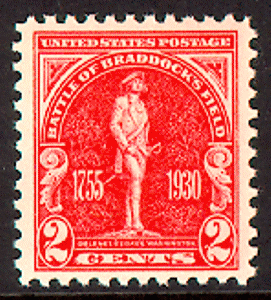 1930 July 9. Battle of Braddock’s Field 175th anniversary. Col. George Washington (statue) was part of Gen. Braddock’s expedition that failed to move the French from Fort Duquesne, as well as Gen. John Forbes’ (clan Forbes) successful campaign that resulted in Fort Duquesne’s becoming Fort Pitt. usstampgallery
1930 July 9. Battle of Braddock’s Field 175th anniversary. Col. George Washington (statue) was part of Gen. Braddock’s expedition that failed to move the French from Fort Duquesne, as well as Gen. John Forbes’ (clan Forbes) successful campaign that resulted in Fort Duquesne’s becoming Fort Pitt. usstampgallery
1758 – William Cochrane, the 7th Earl of 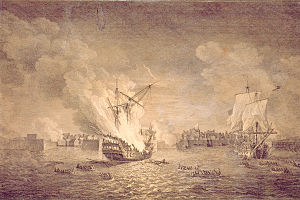 Dundonald, died at Siege of Louisbourg, on 9 July 1758. Unmarried.
Dundonald, died at Siege of Louisbourg, on 9 July 1758. Unmarried.
Siege of Louisbourg (1758): British burning warship Prudent and capturing Bienfaisant.
1776 – George Washington ordered the Declaration of Independence to be read out loud to members of the Continental Army in New York, New York for the first time. A third of the signers were of Scots descent. For 5 days Captain Alexander Hamilton watched as a forest of ship masts grew ominously to the east; in all, some 480 British warships would sail into New York Harbor. One of Washington’s soldiers wrote in his diary that it seemed “all London was afloat.” Soon the war ships began to disgorge the first of 39,000 troops—the largest expeditionary force in English history—onto Staten Island.
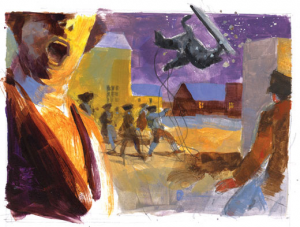 Hamilton Takes Command. On July 9, at 6 o’clock in the evening, Captain Alexander Hamilton [clan Hamilton] and his men stood to attention on the commons to hear the declaration read aloud from the balcony of City Hall. Then the soldiers roared down Broadway to pull down and smash the only equestrian statue of King George III (Scots ancestry James 6th) in America.
Hamilton Takes Command. On July 9, at 6 o’clock in the evening, Captain Alexander Hamilton [clan Hamilton] and his men stood to attention on the commons to hear the declaration read aloud from the balcony of City Hall. Then the soldiers roared down Broadway to pull down and smash the only equestrian statue of King George III (Scots ancestry James 6th) in America.
www.smithsonianmag.com/people-places/hamilton.html#ixzz2Q0HG3H48
1785 William Strahan died. (24 March 1715 – 9 July 1785) was a Scottish printer and publisher, and a Member of Parliament. Strahan partnered with Andrew Millar VI, London Bookseller, who died 8 June 1768. Faulkner’s History of Chelsea tells that Millar’s will directed that he ‘be buried in the vault I built in Chelsea parish for my dear son, Andrew Millar (7th)’ who died 1730’; an obelisk near the center of the cemetery bore all the names. Millar’s will left legacies outside the family to David Hume and to the sons of Henry Fielding, and to three godsons, children of William Strahan the publisher, Thomas Becket the bookseller, and Robert Spavan his late shopman. The Miller family is from Ayrshire, Ochiltree and Paisley.
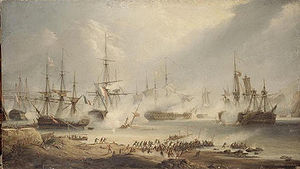 1801 The Battle of Algeciras. (13 June to 14 July 1801) Bay of Gibraltar. Thomas Lord Cochrane. Wikipedia.
1801 The Battle of Algeciras. (13 June to 14 July 1801) Bay of Gibraltar. Thomas Lord Cochrane. Wikipedia.
The battle of Algeciras, Alfred Morel-Fatio. Linois passed Gibraltar on 3 July and during the night discovered the 14-gun brig HMS Speedy a short distance ahead. Linois’s squadron had captured a number of merchant vessels during their voyage but this was their first warship, and although it was no match for size, Speedy was an infamous vessel under the command of Captain Lord Cochrane. Cochrane had spent the last year raiding the Spanish coast with great success, taking or destroying more than 50 ships including the celebrated Action of 6 May 1801 in which Cochrane had attacked and captured the far larger Spanish privateer frigate Gamo off Barcelona. Cochrane’s initial belief that the strange ships were Spanish treasure vessels caused him to bring Speedy closer to the ships and by the time he realised his error escape was impossible. Rather than surrender however, Cochrane threw all of his guns and excessive weight overboard and maneuvered his ship to avoid coming into range of the French broadsides. He then attempted to cut directly between the approaching Formidable and Desaix, the small target avoiding the concentrated fire of the French ships and pulling into open water. At this, Commodore Jean-Anne Christy-Pallière on Desaix swung his ship about and pursued, several shots damaging Speedy‘s sails and rigging. As Speedy slowed, Desaix overtook the small brig and fired a full broadside at close range. This was fired as the French ship was on the uproll and therefore missed the deck entirely and failed to cause a single casualty. It did however tear away the remaining rigging and sails, leaving Speedy unmanageable. Rather than suffer another broadside, Cochrane surrendered his ship and was taken aboard Desaix, where Christy-Pallière acknowledged his brave defence by refusing to accept Cochrane’s surrendered sword with the words “I will not accept the sword of an officer who has for so many hours struggled against impossibility”. From Cochrane, Linois learned of Saumarez’s presence ahead of him and, knowing that his presence would have been reported by the garrison at Gibraltar, his squadron returned eastwards around Cabrita Point and came to anchor at Algeciras, a fortified Spanish port which lay directly opposite and within sight of Gibraltar across Algeciras Bay on the 4 July. Thereafter, the captured British officers, including Ferris and Cochrane, were sent to Gibraltar, later joined by the wounded British sailors captured on Hannibal.
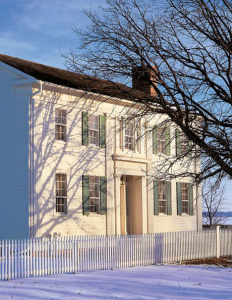 1841 Joseph Smith the Prophet, in the house of Brigham Young, at Nauvoo, Illinois, (clans Huntley, Hamilton, Mackenzie, Mack of Inverness Scotland, and Malcolm 3rd Canmore King of Scots) Doctrine and Covenants 126. At this time Brigham Young was President of the Quorum of the Twelve Apostles. Take especial care of your family from this time, henceforth and forever. Amen.
1841 Joseph Smith the Prophet, in the house of Brigham Young, at Nauvoo, Illinois, (clans Huntley, Hamilton, Mackenzie, Mack of Inverness Scotland, and Malcolm 3rd Canmore King of Scots) Doctrine and Covenants 126. At this time Brigham Young was President of the Quorum of the Twelve Apostles. Take especial care of your family from this time, henceforth and forever. Amen.
Mansion House in Nauvoo.
1845 Gilbert, Lord Minto, the Scottish colonial politician, was born. Governor-General of Canada between 1898 and 1905, and as Viceroy of India, 1905-1910. www.bbc.co.uk/scotland/history/onthisday/july/9
1850 – U.S. President Zachary Taylor dies and Millard Fillmore becomes the 13th President of the United States. Fillmore’s ancestors were Scottish Presbyterians on his father’s side and English dissenters on his mother’s.
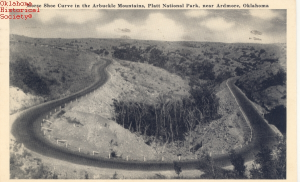 1866 Macklyn Arbuckle, (July 9, 1866 – April 1, 1931) was an American silent screen and stage actor, of Scottish descent. Cousin of Fatty Arbuckle. The Arbuckle Mountains of South central Oklahoma are named for Gen. Matthew Arbuckle (1778–1851), a career soldier from Virginia, whose name was given to Fort Arbuckle. Arbuckle, Lanarkshire, Scotland, is the ancient family seat.
1866 Macklyn Arbuckle, (July 9, 1866 – April 1, 1931) was an American silent screen and stage actor, of Scottish descent. Cousin of Fatty Arbuckle. The Arbuckle Mountains of South central Oklahoma are named for Gen. Matthew Arbuckle (1778–1851), a career soldier from Virginia, whose name was given to Fort Arbuckle. Arbuckle, Lanarkshire, Scotland, is the ancient family seat.
Horse shoe curve in the Arbuckle Mountains, Platt National Park, near Ardmore, Oklahoma. Considered the oldest mountains in America. (How could mountains have different ages?)
1867 Queens Park Football Club was formed, the first senior club in Scotland. Nicknamed the Spiders, Queen’s Park are still the only amateur team in the Scottish senior football set-up, and still play their games at Hampden Park, Glasgow, the home of the Scottish national side. www.bbc.co.uk/scotland/history/onthisday/july/9
Utah Standard News depends on the support of readers like you.
Good Journalism requires time, expertise, passion and money. We know you appreciate the coverage here. Please help us to continue as an alternative news website by becoming a subscriber or making a donation. To learn more about our subscription options or make a donation, click here.
To Advertise on UtahStandardNews.com, please contact us at: ed@utahstandardnews.com.


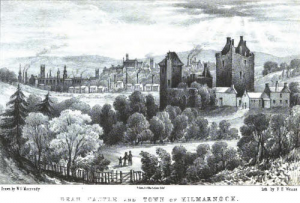
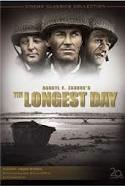
Comments - No Responses to “July 9th Scots Book of Days”
Sure is empty down here...